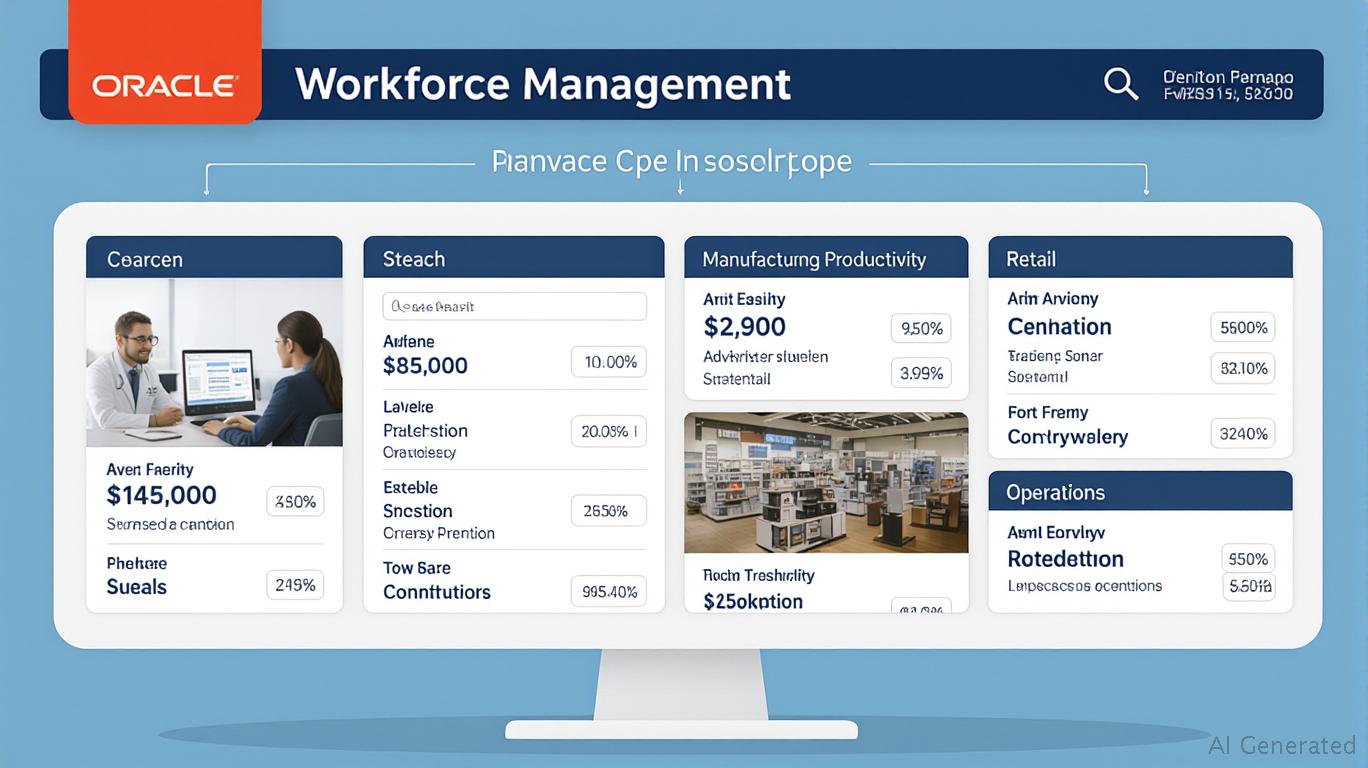Oracle Emerges as Unstoppable Force in AI-Driven Workforce Management
The enterprise software landscape is undergoing a seismic shift as artificial intelligence (AI) and generative AI (GenAI) reshape workforce management. In this transformation,
has solidified its dominance, securing top rankings across seven categories in ISG's 2025 Buyers Guides™ for workforce management software. This leadership position underscores a pivotal opportunity for investors: Oracle is not just a player in this space—it is the standard-bearer, leveraging AI to address the labor market's most pressing challenges. With real-time analytics, predictive scheduling, and self-service tools now table stakes for enterprises, Oracle's comprehensive solutions are primed to capitalize on a $100+ billion market in flux.
Oracle's ISG rankings reveal a decisive edge over rivals like ADP and UKG. In categories spanning workforce management basics, suites, and industry-specific solutions (healthcare, manufacturing, retail), Oracle achieved top scores across usability, adaptability, and TCO/ROI. Competitors lagged in at least one category, but Oracle's across-the-board leadership signals its software's unmatched versatility. For investors, this data is a harbinger of market share gains. Consider the —a widening gap reflects Wall Street's recognition of Oracle's AI-driven moat.
The industry's shift toward AI-driven systems is no longer optional. Tight labor markets, hybrid work models, and rising employee expectations have forced companies to prioritize tools that optimize labor costs while improving compliance and morale. Oracle's solutions directly address these needs:
- Healthcare: Integrates electronic medical records with AI to predict staffing demands, reducing overtime and improving patient care.
- Manufacturing: Combines machine health data with workforce schedules to allocate labor dynamically, cutting downtime by up to 30%.
- Retail: Uses weather forecasts and computer vision-derived foot traffic data to adjust staffing in real time, boosting sales per employee.
Crucially, Oracle's AI layer enables self-service features for employees, from shift swaps to benefits management, reducing HR administrative burdens. ISG's validation of Oracle's “user-friendly interfaces” and “minimal customization needs” further lowers adoption barriers for enterprises, accelerating ROI.
The strategic advantage for investors is clear: Oracle is not merely keeping pace with AI—it is defining the赛道. While competitors like
and cling to niche “Exemplary” ratings, Oracle's full-spectrum leadership leaves little room for rivals. The company's focus on predictive analytics and skills-based optimization also positions it to capture emerging demand for hybrid work tools, where 72% of employers report difficulty managing distributed teams.Investors should act with urgency. Oracle's stock has surged 22% since January 2025, but its valuation still lags its AI-driven peers. As enterprises accelerate spending on workforce management upgrades—projected to grow at 8% annually through 2030—Oracle's leadership in ISG's rankings will translate to outsized revenue gains. The risks? Slower-than-expected AI adoption or a sudden labor market easing. Yet with global unemployment at record lows and remote work here to stay, the tailwinds for AI-driven workforce solutions remain strong.
In conclusion, Oracle's 2025 ISG rankings are more than accolades—they are a roadmap for investors. This is a company that has not just adapted to AI but has embedded it into every layer of its workforce management stack. The question is not whether competitors will catch up, but whether they can do so before Oracle's moat becomes unassailable. For portfolios seeking exposure to the AI-driven future of work, Oracle is a buy—now, before the market fully prices in its advantage.

Comments
No comments yet